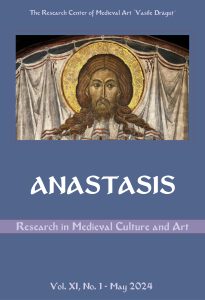The Funerary Character and Symbolism of the First Christian Images
The Funerary Character and Symbolism of the First Christian Images
Author(s): Sabina-Maria AzoițeiSubject(s): Christian Theology and Religion, History, Cultural history, History of Church(es), Theology and Religion
Published by: Editura ARTES
Keywords: aniconism; sacred images; symbols; catacombs; pagan imagery; Christian meaning;
Summary/Abstract: The first two centuries of our era constitute a period devoid of sacred images, and this aniconic phase of Christianity was not only determined by the observance of the Old Testament prohibition. The lack of interest of Jesus and the apostles towards the idea of preaching through images, the absence of information about the appearance of Christ, but also the precarious economic situation of the Christian community before the legalization of Christianity, are important factors that must be taken into account when discussing this absence of cultic representations characteristic of the first two Christian centuries. However, despite the initial aniconism, the development of the new cult in the Greco-Roman world, where images of divinities were omnipresent, led to the emergence of a Christian art. The first spaces dedicated to visual representations of the sacred are the catacombs. On the walls of the underground cemeteries, the adherents of the new religion depicted various symbols taken from the funerary repertoire of pagan imagery, which they adapted to acquire Christian significance, the cross, the fish, the vine and the lamb, included.
Journal: Anastasis Research in Medieval Culture and Art
- Issue Year: XI/2024
- Issue No: 1
- Page Range: 146-169
- Page Count: 24
- Language: English

